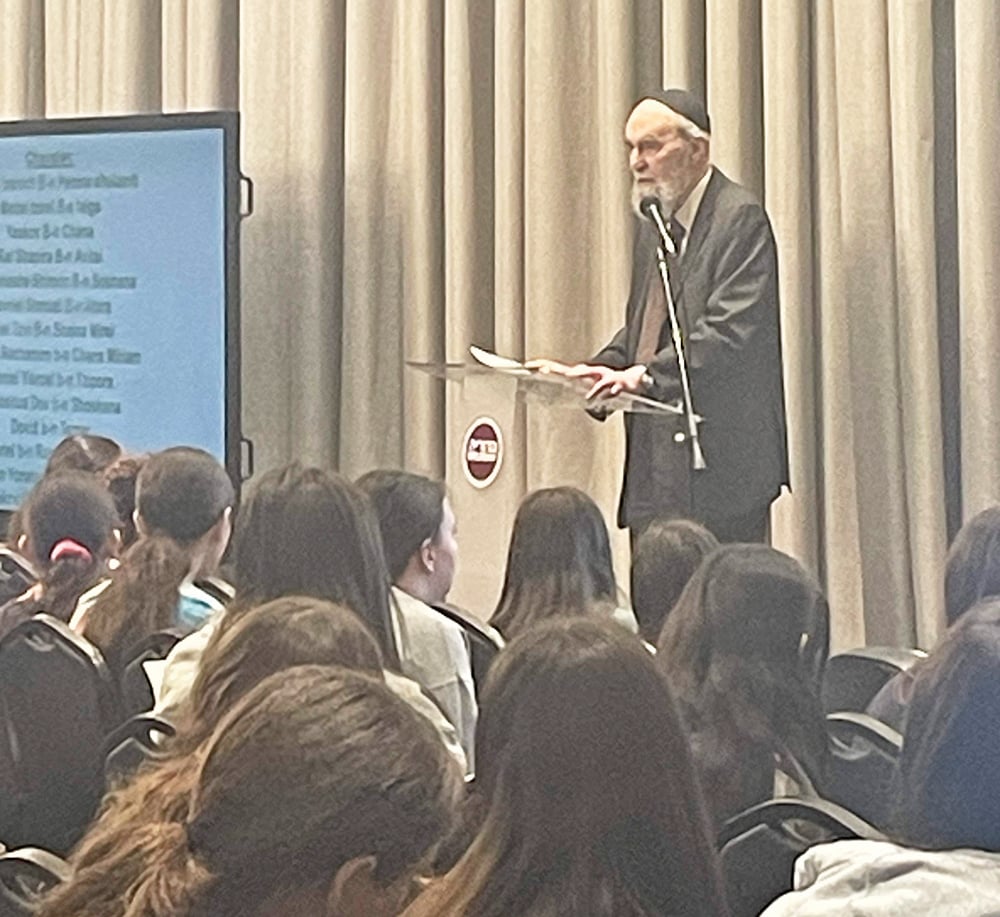I was introduced to the fine art of Purim spoofs back in the late ‘90s when I was on the staff of the YU Commentator. More effort went into the Purim edition than any other paper we published, and often the pieces written in jest, with a comedic license not usually available to newspaper writers, were more effective at making a point than any editorial could have been.
Since then I’ve written some type of Purim spoof or shtick every year since. Some were for my local shul at the time or published online or in print in some forum. I always wrote anonymously; you have probably seen some of my work, and I hope you enjoyed it. I had the most fun when someone forwarded me something funny they read, not knowing that I was the one who wrote it.
The purpose of these pieces is always to entertain, but there is a deeper purpose of making a serious point in a lighthearted way. Many of the things we deal with on a daily basis seem ridiculous if we step back and frame them in a humorous, exaggerated manner. It lets us take a wider perspective and see that some of the things that gave us so much stress shouldn’t be taken so seriously. The inspiration for this is no less than the Megillah itself, which teaches us important lessons about God’s presence in the world through farce, exaggeration and humor.
This is the first year I did not write any shtick. You might be thinking that so many serious things happened this year that we can’t possibly make light of it. But actually I think it’s the opposite. It’s been such an absurd year that we’ve been living in a bizarro world all year; life has imitated shtick.
Purim shtick used to be a once-in-a-year opportunity to poke fun at serious topics, with a Purim license that didn’t apply the rest of the year. But the level of memes, fueled in part by a lot more free time this year, has made even the most minor event into viral shtick. This was a year that a troupe of funeral dancers became a commentary on life, and where a deceased adult film star kept showing up in unexpected places. The most recognizable image from the presidential inauguration was not of the president, but of a grumpy-looking spectator. And an obscure three-minute dvar Torah became an internet sensation, and then the rabbi who gave the dvar Torah started imitating the meme in his speeches. It was indeed a year of life imitating shtick.
But the theme of v’nahafoch hu, usually reserved for Purim, permeated our serious news as well. A popular response to the murder of a man by the police was to loot and destroy businesses at a time when they could least afford it. Thousands of healthy people lined up in the cold and rain for hours before Thanksgiving to get a test to tell them if they were sick. A group of armed radicals successfully penetrated the seat of our federal government, and when they got there, they posed for selfies while wearing animal costumes. The rabbis of our community were hailed as visionary leaders for convincing everyone to stop going to shul. Any of these scenarios could have been last year’s shtick—but instead they are this year’s news. And please note: I’m not making light of any of these stories. They were all deadly serious. But also ridiculous.
On Purim we drink until the point of “ad d’lo yada”—until you cannot tell the difference between Mordechai and Haman, between good and evil. This year there was so much fake news, so many conspiracy theories, so many leaders caught violating their own guidelines, that sometimes it was hard to tell what is real anymore.
It was last Purim when our world turned upside down. The last time many of us were in shul was on Purim. The one week that everyone makes sure to get to shul was the first Shabbat when people started avoiding shul, and shuls in New Rochelle had already canceled services. We made the hard decision to shut everything down for, what was it, two weeks? A year later we are still living in Crazy Town. Like a mezuzah on a room full of sefarim, what does Purim mean when people have been wearing masks all year?
In Israel they have a saying, “lo kol yom Purim,” not every day is Purim. But this year every day has been Purim—a farce, an upside-down world, an embodiment of hester panim, hidden faces, not to mention all the day drinking.
So how do we make meaning of Purim this year? In addition to it being a very unusual year, we also have a very unusual Purim. Purim this year falls out on Friday, which is rare; the last time it happened was 13 years ago. In Jerusalem, Purim falls out on Shabbat, and the mitzvot of the day are spread out across Friday, Shabbat and Sunday, known as Purim meshulash, triple Purim. For the rest of us, we celebrate on Friday. Some people have their seuda in the morning, so they can finish up Purim early and get ready for Shabbat. But others still hold their seuda in the afternoon. As the sun sets and Purim turns into Shabbat, they cover the table (pores mapa), say Kiddush, and then continue the meal. One meal celebrates both Purim and Shabbat in a continuous, joyous event.
Perhaps this can be a metaphor for the year and how to appreciate Purim this year. Even when the days blend together and every day feels the same, it is our ability to adjust to those circumstances that makes the time meaningful. Purim is not a time to make sense of things: it’s to dress up and drink until we don’t know the difference and it no longer really matters. This year we need Purim more than ever. It’s time to get high, and not just on the Borei Olam.
By Ben Sandler













